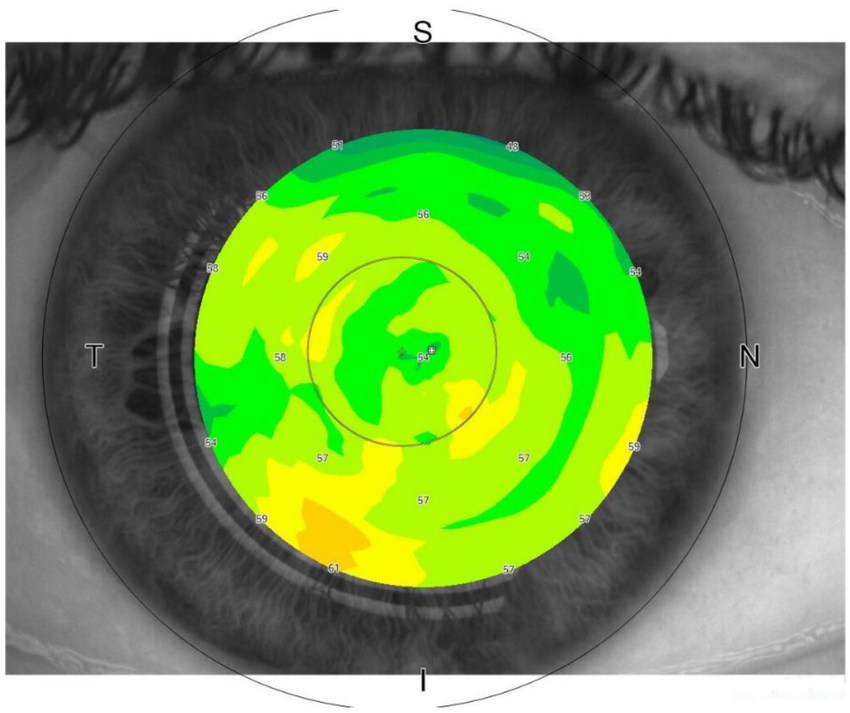 |
|
Both corneal and epithelial thickness measurements are important ocular examinations for refractive surgery. Bear in mind that dry eye patients may yield unreliable results due to the influence of an unstable tear film. Photo: Napoli PE, et al. J Clin Med. 2020(9):668. Click image to enlarge. |
Practices with access to anterior segment OCT (AS-OCT) find that the technology can provide very precise information on anterior segment structures beyond what’s possible with a slit lamp or even a corneal topographer. Of particular interest is its use in screening candidates for refractive surgery. Researchers, publishing recently in BMC Ophthalmology, wanted to compare both the repeatability and reproducibility or total corneal and corneal epithelial thickness mapping using AS-OCT according to tear film break-up time (TBUT).
Included in the investigation were 132 eyes of 67 participants. Eyes were divided into three subgroups by TBUT status:
group 1: n=50, TBUT ≤ 5sec
group 2: n=47, TBUT from 5sec to 10sec
group 3: n=35, TBUT >10sec
All eyes were imaged separately three times by two operators to obtain thickness maps of the total cornea and corneal epithelium in a 9mm diameter area. Pairwise comparisons were done among the sets for each eye.
The researchers found that AS-OCT demonstrated lower repeatability in group 1—i.e., those with the most unstable tear films—than in the other two groups; however, groups 2 and 3 showed similar results, with only a few areas displaying differences between the two. As well, no significant differences were seen in corneal thickness in most areas. Despite this, a few areas did display significant intraoperator or interoperator differences of corneal thickness mapping. These results broadly indicate that the quality of the tear film influences the repeatability of corneal and epithelial thickness measurements, the researchers argued in their paper on the work.
The lower repeatability of the epithelial thickness mapping in group 1 reflects previous research finding that OCT thickness measurements in dry eye patients and others with a compromised tear film was significantly lower than in normal subjects. As such, a shorter TBUT is associated with lower repeatability. This may be due to tear break-up occurring in the eye during the entire measurement process, causing decline in both repeatability and reproducibility. OCT has also demonstrated similar results in past investigations for corneal thickness measurements in terms of repeatability and reproducibility. That is, contact lens wearers, those with dry eye and LASIK or PRK patients have worse scores.
In the current study, total corneal thickness repeatability and reproducibility displayed little difference among groups when compared with epithelial thickness differences. TBUT reflects the corneal surface’s tear film stability, with unstable tears leading to a shorter measurement, but the tear film is quite thin. Consequently, the effect is small for relatively larger measurements like the corneal thickness measurement.
The study authors apply their findings clinically, believing that “it may provide information relevant to clinical refractive surgery when epithelial thickness measurements are unreliable” and that “poor tear film stability requires careful evaluation of corneal epithelial thickness.”
Lin K, Xu Z, Wang H, et al. Comparison of the repeatability and reproducibility of corneal thickness mapping using optical coherence tomography according to tear film break-up time. BMC Ophthalmol. 2020;24(1):275. |


